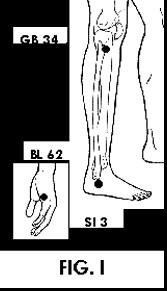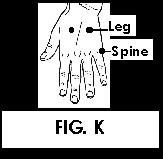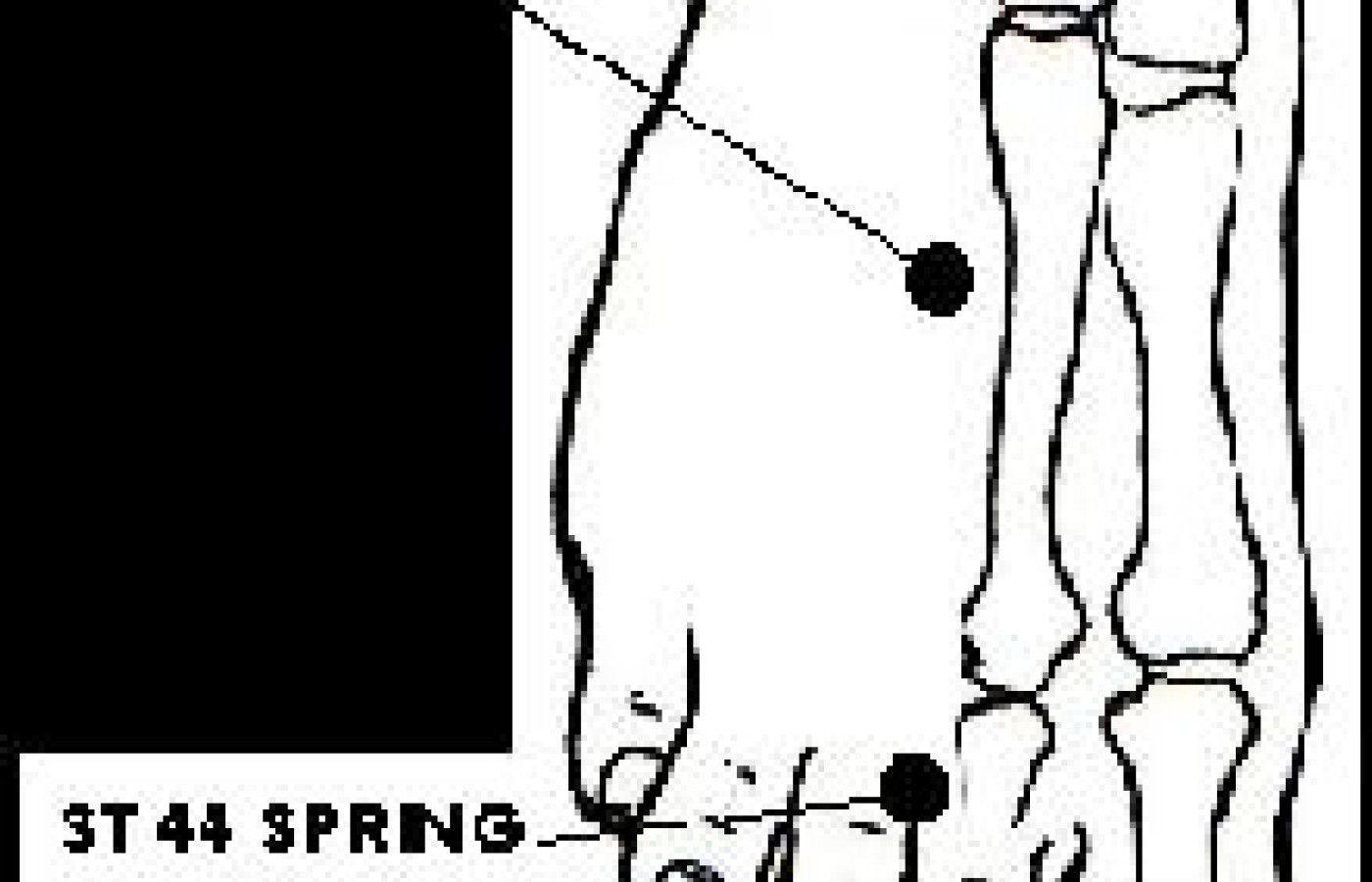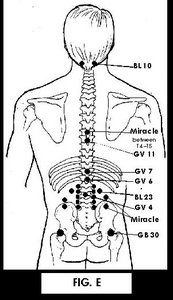One of the longest nerves in the body is known as the vagus nerve (VN). The VN is the 10th pair of cranial nerves that originates at the brain stem in the medulla oblongata. This nerve is part of the parasympathetic nervous system, which is a part of the ANS. Research suggests ear acupuncture can activate the VN.
The Lumbar Spine: How to Achieve Outrageous Clinical Results
It is a medical fact that the combined total of all gastrointestinal, neurologic, respiratory, dermatologic, circulatory, metabolic, genitourinary, gynecologic and psychiatric conditions which plague mankind pales in comparison to the overwhelming number of musculoskeletal conditions presented to professional practices nationwide. Of those conditions, low back pain leads the list by far.
Chiropractors have been given the dubious honor of being so-called "back doctors," which of course is far from reality. Like acupuncture, chiropractic is an all-inclusive healing art that effectively treats the body through the nervous and electromagnetic systems. Its use has been demonstrated and proven for scores of somato-viscero conditions. To classify doctors of chiropractic as "back doctors" just because their primary avenue of approach in treatment is the spine is just as absurd as labeling an MD who given injections into the hip a "butt" doctor, or an acupuncturist a "skin" practitioner.
Allopathic medicine has little to offer for pain relief or muscle spasms in the vast majority of lumbar syndromes. Surgical intervention offers moderate to good response in only those few patients who have a true disc herniation. This group however, represents just a fraction of the millions of people who suffer from daily lumbar pain.
Even though acupuncture is effective and indicated for most of the body's health issues, it is generally recognized as being stellar for pain. Since lumbar pain is the number one condition affecting mankind, it stands to reason that LAcs, who are so adept at relieving pain, are sharing a larger portion of the lumbar pain "new patient pie."
With the general public's ever-growing awareness of alternative and complementary approaches to pain and dysfunction, acupuncturists are sitting in one of the highest and most prestigious chairs of healing in North America. Literally hundreds of thousands of new patients will seek the service of acupuncture providers this year. That number is expected to double the following year as awareness of acupuncture's availability becomes more firmly established.
As previously mentioned, lumbar pain is unquestionably the number one health condition affecting mankind, beating out the common cold for the top honor. Obviously, there are a number of reasons for lumbar pain. Facet syndrome, myotonic lumbodynia, discogenic lumbalgia, spinal stenosis, visceral referred pain, sciatic and femoral neuralgia, tumor, cancer, advanced osteoporosis, hypertrophic spondylosis and vertebral subluxation lead the list of causative factors of lumbar pain.
Even though a differential diagnosis that includes laboratory findings, x-ray and MRI is necessary to rule out spinal tumors, cancer and osteoporosis, the professional acupuncturist will want to establish a good working relationship with an appropriate medical clinic to arrange these procedures when appropriate. This is assuming the patient has not previously sought medical care or the patient is not responding to conservative care in an acceptable period of time.
Chiropractic has long been considered the low man on the medical totem pole. Unfortunately, any isolated malpractice situation that happens to an individual practitioner generally affects the entire profession's reputation. The chiropractic profession's image has been tarnished before, and malpractice can become an issue when a DC begins a vigorous treatment regime for low back pain without a complete medical workup. This isn't fair, but it's a fact of life! Fortunately, this scenario happens very infrequently today, as the chiropractic profession has expanded its awareness to include a host of diagnostic criteria, which are now mainstream in chiropractic practices.
The acupuncture profession must look at this same situation that has affected chiropractic. Most acupuncturists establish a diagnosis of low back pain due to TCM protocols. Even though they may be absolutely correct in 99.99% of the cases, it is imperative that acupuncturists know when to refer or seek additional diagnostic studies. Like it or not, courts of law do hold licensed professional practitioners responsible for diagnoses, both found and unfound.
During your career as an acupuncturist, you are going to encounter a variety of lumbar syndromes that are caused by serious pathology and will not respond to conservative acupuncture care. We must all be acutely aware of which cases are not within our parameters for treatment and act accordingly. Some of these cases will have to be referred; however, they make up only a small fraction of the lumbar pain patients whose conditions are caused by a variety of muscular, ligamentous and nerve involvements and that are successfully treated through acupuncture.
In my 30 years of practice, I have seen that acupuncture for the most part is a standalone treatment for most cases of lumbar pain caused by musculoskeletal deficits. In many cases, tuina and chiropractic adjustments are absolutely essential for the complete resolution of a condition. Even though acupuncture can increase collateral blood circulation, relax skeletal muscles reduce edema and alter pain perception, the orthopedic departments in TCM universities and hospitals throughout the People's Republic of China rely very heavily on direct spinal manipulation as an integral part of treatment.
A good reciprocal referral and working relationship with a doctor of chiropractic will round out your health care team. Many DCs have found harmonious and professional beneficial relationships with referrals to LAcs for acupuncture in conjunction with their chiropractic adjustments. Remember, not all MDs and DCs wish to practice acupuncture even though their scope of practice may allow it. They do, however, understand the benefits and will freely refer to a practitioner they have developed respect for. One way of developing that respect is to refer patients to them for procedures outside of your scope or expertise thereby creating a professional relationship.
Achieving "outrageous clinical results" in low back pain with acupuncture is expected in at least 95% of all cases stemming from facet syndrome, discogenic lumbodynia, myotonic lumbalgia and spinal stenosis. This group makes up the vast majority of lumbar conditions seen nationally. The illustrations shown throughout this paper are perhaps the most powerful points acupuncture has to offer regarding low back pain. There are additional points not illustrated here primarily concerning auriculotherapy, scalp and hand acupuncture that will be dealt with in future presentations. As I have had the good fortune to study in nine Asian nations, the points and protocols shown here do not follow one particular style of acupuncture, but are the best of a variety of Asian approaches. In any event, these combinations of points derive fantastic clinical response in the vast majority of cases.
Obviously the format of this publication does not allow for the space necessary to fully explain the mechanisms and academic reasons why the following points are selected. Even though an explanation is not provided, professional acupuncturists are not unfamiliar with the points illustrated and may understand the rationale of each point through their own specific style of acupuncture.
Try these points in the next 10 cases you see of severe discogenic lumbalgia, sciatic neuritis, spinal stenosis, myotonic lumbodynia and facet syndrome. Begin with the well-spring-stream of the kidney, bladder, gallbladder and stomach in that order. Then stimulate SI3 and BL62 followed by the inguinal crease points ST30, SP12 and SP13. The points LI20, ST3 and GV26 have extremely specific applications to pain and are indicated in any musculoskeletal condition. All of the above points may be used with usual Chinese needle procedures, or you may wish to utilize a Japanese style of needle stimulation of nonretention with insertion followed by three seconds of manual stimulation, then withdrawn moving on to the next point. This procedure is extremely powerful. The patient may then be turned over to needle the lumbar points on the Bladder and DU MO along with BL54(40), GB34 and GB30. These points should receive 20-minute needle retention. To increase stimulation, direct electrical stimulation to the needle is used with the alligator clip from the WQ-6F or the WQ-101D electronic stimulator. Be sure to add the two points on the hand for the leg and spine. This treatment is performed bilaterally. With sciatica, add BL50(36) and BL 51(37). Laser (5mw, 632nm) and direct transcutaneous electronic dermal stimulation have powerful effects as well, with 12-second stimulation per point being sufficient.
The following acupoint rationale historically achieves outrageous results in the vast majority of lumbar cases. Most cases will respond within four treatments, even though more may be indicated for full resolve. Remember, the practitioner achieving the best results wins! Achieving outrageous clinical results is the number one way to insure your success. Try this approach to low back pain; I think you will be quite pleased with the outcome.
Best wishes in the Year of the Horse!

|

| |||

|

| |||
| ||||


|



| |||






